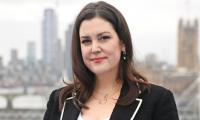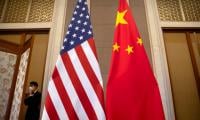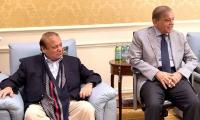KARACHI: Pakistan, with a population of 107 million women, is the second-worst country in terms of gender parity. This key finding was shared by the World Economic Forum in its Global Gender Gap Report, released on Wednesday. The report ranks Pakistan 145 out of 146 countries.
According to the report, Pakistan has closed its gender gap by 56.4 per cent (a score of 0.564) -- an increase of 0.8 percentage points. This is the highest overall level of parity the country has recorded since the report was launched in 2006. The report looks at countries’ performance in closing gender-based gaps in four critical areas: Health and Survival; Education Attainment; Economic Participation and Opportunity; and Political Empowerment.
In Education Attainment, with a score of 0.825, Pakistan stands at the 135th position. In Health and Survival, it has performed better than China (0.940) and India (0.937) and scored 0.944 -- standing at the 143rd position. In Economic Participation, it has scored 0.331 and taken 145th position, a notch above Afghanistan (0.176). But the country has shown an impressive performance in Political Empowerment; with a score of 0.156, in the 95th position.
The report reveals that Iceland is the world’s mostgender-equal country after having closed its gender gap by 90 per cent. Pakistan is only behind Afghanistan, which has closed 43.5 per cent of its gender gap. Besides the two neighbours, the other countries in the list of the five worst countries in terms of gender parity are Congo, Iran and Chad. Overall, Nordic countries have been doing fairly well when it comes to closing the gender gap. Finland, Norway and Sweden enjoy second, third and fifth spots respectively. New Zealand is the only non-European country to make it to the top five. Rwanda (6th) and Namibia (8th) are the only two countries from the Sub-Saharan Africa region to be included in the top 10.
South Asia is the lowest-ranking region and has closed 62.3 per cent of the gender gap. It has the lowest regional gender parity scores in Health and Survival and Economic Participation at 94.2 per cent and 35.7 per cent respectively, and the second lowest in Education Attainment at 93.2 per cent. It has the fourth highest gender parity score in Political Empowerment at 26.2 per cent.
The best-performing country in the region is Bangladesh with a global rank of 71, slipping six places from last year’s rank of 65. Its scores in critical areas stood at 0.962 in Health and Survival; 0.923 in Education Attainment; 0.427 in Economic Participation and Opportunity; and 0.546 in Political Empowerment.
India has the lowest ranking in Health and Survival at 0.937. Its score in Economic Participation is just two points above Pakistan at 0.350. Its performance in Education and Political Empowerment is better than Pakistan -- 0.961 and 0.267, respectively. Sri Lanka has scored 0.980, 0.556, 0.988 and 0.157 respectively in the four sub-indexes.
The report shows that globally, the gender gap has been closed by a little over 68 per cent. It predicts that the world will take around 132 years to reach gender parity – four-year improvement from the 2021 estimates of 136 years. These projections have been revised owing to the disruptions caused by the Covid-19 pandemic. All estimates up to the year 2020 -- or before the pandemic hit -- had indicated that around a hundred years were required to close the gender gap in the world. At an individual level, South Asia will need more than 197 years to reach gender parity – likely to achieve in the year 2219.
For this report, new metrics were developed with LinkedIn to better understand how health and economic shocks hit women in the workforce. Speaking to the Virtual Media Briefing on the Global Gender Report 2022, Head of Global Public Policy and Economic Graph Team LinkedIn Sue Duke said that “even in good times, work has not been working for women as well as it has been for men.” According to Duke, the data based on LinkedIn insights shows that the annual share of women in leadership goals has increased to 37 per cent in 2022 – from 33 per cent five years ago. Globally, women make just 31 per cent of leadership roles.
The report has also revealed that there is no industry or country in the world that has achieved gender parity in leadership. Its key findings further highlight that the vast difference between the career trajectory of men and women is due to two factors: transitioning to their first managerial role and internal promotion. The report also highlights how Covid-induced employment losses have hit women hardest. South Asia has been constantly performing dismally in gender parity for the labour-force participation rate.
Surveys carried out in the US, the UK and Germany have concluded that women also have to carry the burden of childcare and home-schooling -- especially during pandemic times. Stress levels in women are 4 per cent higher than in men, affecting women’s well-being and adding more health burden on them.
Another roadblock that women face relates to wealth accumulation. Unequal access to wealth-building resources contributes to the widening wealth divide. Women are at a disadvantageous position in terms of wealth accumulation. The gender wealth gap has been calculated to be 11 per cent. The gap keeps widening; for technical and professional roles, it reached 31 per cent. It further expands to 38 per cent for senior expert and leadership roles.
And while gender gaps in leadership roles are getting wider – women make half of entry-level roles, about a third of managerial roles, and only a quarter of senior leadership positions -- the share of women establishing businesses is much higher than men. In the last five years, this share has doubled. Part of this increase is also attributed to ‘necessity founders’ – women establishing businesses because of job scarcity. And while the number of women-owned unicorns has increased five-fold from 18 in 2020 to 83 in 2021, dollar investment in women-owned businesses is still significantly less than those led by men.
In 2019, women businesses received a 3 per cent share of the total dollar investment. In 2020, the number fell down to 2 per cent and remained stagnant in 2021.
Pakistan’s performance in terms of Economic Participation and Opportunity has been satisfactory – with a score of 0.331 – a 4.5 per cent increase from its last year’s score of 0.316. Wage equality got the highest score of 0.62, and women’s earnings also witnessed a 4 per cent increase in 2022. But this comes in the backdrop of a reduction of 1.9 percentage points in women’s labour-force participation in 2022.
The worst-performing area throughout the world remains Political Empowerment. The report suggests that at the current pace, it will take around 155 years to bridge the gender gap in the Political Empowerment area. There has been no improvement in the results as compared to last year’s.
However, the global average share of women in ministerial roles has increased to 16.1 per cent in 2022 from 9.9 per cent in 2006. The global share of women in parliament has also increased to 22.9 per cent from 14.9 per cent.







